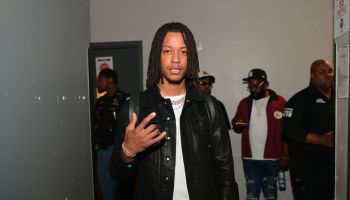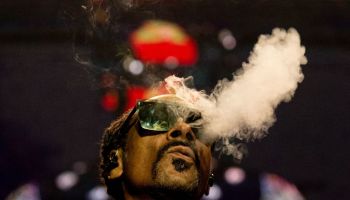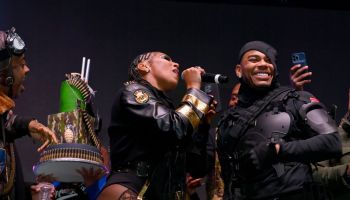Trustocorp is policing the street art scene to expel unwelcome impostors entering the scene. Most recently Mr. Brainwash (aka Thierry Guetta) has been put on the stand to justify his presence in the street art scene as he burst onto the premier real estate of the walls in New York City.
Mr. Brainwash recently showcased in ‘Remix” some of his ‘signature’ works which have been spreading throughout the city. The controversy over Mr. Brainwash’s integrity and intentions for street art is up for debate especially after the Banksy documentary, ‘Exit Through the Gift Shop’ which revealed many suspicious details about the mutual friendship that Banksy supposedly had with the obsessive-French-videographer-turned-street-artist, Theirry Guetta.
[pagebreak]
Clouds of accusations of hijacking Banksy’s style and techniques have been looming over Mr. Brainwash and finally Trustocorp has filed a cultural litigation against his suspect antics and for trespassing onto the local scene in New York.
[pagebreak]
Graffiti and street art are based around the element of territorializing as a means to reclaim public space for artistic expression. While Mr. Brainwash only exercised his constitutional right of “freedom of expression”, Trustocorp stamping emblems of “Locals Only, No Fakes, No Phonies” is a clear warning of opposition from the independent street art community to those who are exploiting subversive art forms for self promotion and arbitrary commercial interests.
Trustocorp has been an advocate for re-directing public space by making familiar and appropriated street signs to provoke contemplation all over urban cities like Manhattan, Miami, Philadelphia, and Williamsburg.
[pagebreak]
Implied in their name, Trustocorp is an unofficial-official conglomerate of street art which leads us to the question of ‘Who regulates street art?’ Simply speaking, it was traditionally a war between institutions and guerrilla artists but we are about to see the eruption of new issues arising with the commercialization of subversive advertising.
Ron English, a culture jammer has contributed largely to the popularization of flash mobs for a 2008 Ray Ban Campaign go along with his 6 story advertisement in Manhattan. Street artist Shepard Fairey has also evolved into a new commercial identity in his own right through his works for the Obama campaign. When artists surface from the underground, the lines separating the individual from institutions become blurred. We’re not sure what the formal checklist of a “street artist” entails, but we can certainly sense the innately superficial. Mr. Brainwash’s sovereignty and presence on the street will continue to be discussed, but in the meantime keep an eye out for authenticity while strolling along the avenue.
-Evelyn Kim|Follow me@evelynjkim
















